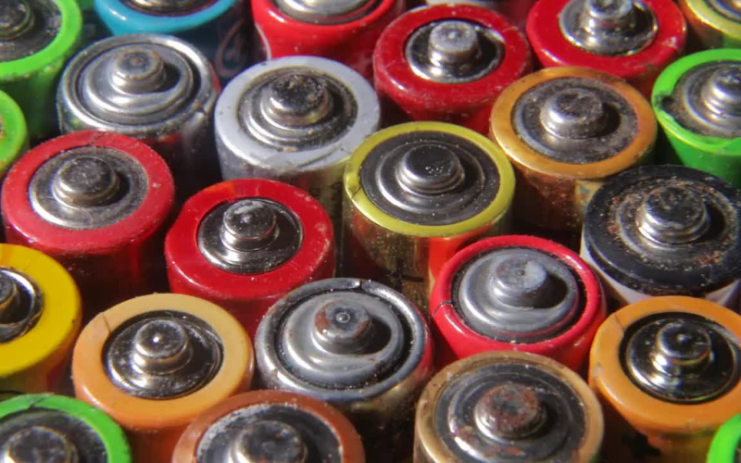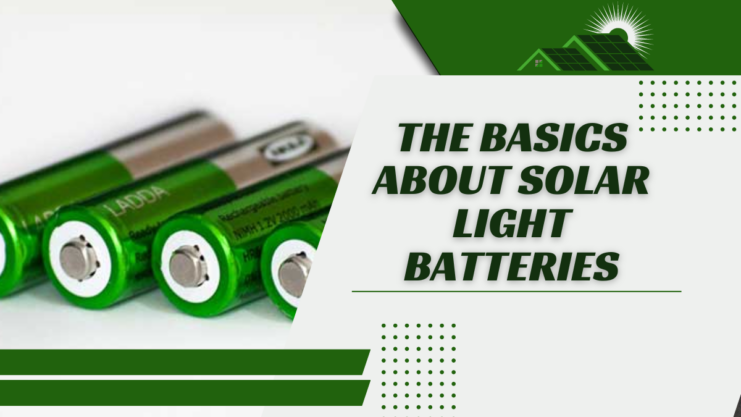Solar lights are a boon to making the areas around your home and garden safer and more secure at night. Plus, they can be great looking, efficient, and also environmentally friendly.
At the heart of these modern inventions are the rechargeable batteries used in solar lights. These types of solar light batteries hold and then release electricity to power the lights each night, then recharge themselves from the light of the sun the following day.
The Different Types of Solar Light Batteries
Knowing the type of solar light batteries you should use is important for a number of reasons. The original design characteristics have been set by the manufacturer to make the device work as well as it is expected to for the lifetime of the product.
When you use the wrong type of battery, it can often create a minor problem, such as the device not working at all, or a major disaster such as rendering it totally unusable by completely destroying the device’s electronic circuitry.
Most of today’s solar garden lights are designed to use between 1 and 4 batteries to operate properly. So, when you need to replace your batteries, make sure the battery specifications are consistent with the batteries that originally came with the device.
Three of today’s most common types of batteries used in garden lights are:
- Lithium Ion
- Nickel Metal Hydride (NIMH)
- Nickel Cadmium (NiCad).
The most commonly used sizes are AAA and AA rechargeable and range from about 300 mAh up to 1200 mAh in capacity. The important thing to remember is that the batteries you use match the manufacturer’s specifications, and each type of battery chemistry has its own pros and cons:
NiMH vs. NiCad
Nickel metal hydride solar light batteries can nearly always be used interchangeably with NiCad chemistry lights and will usually be the better choice for a number of reasons. The primary reason is that NiMH batteries have a longer life cycle NiCad batteries. They may be a slightly bit more expensive, but NiMH batteries will not only last longer in storage before being placed in operation, and they will last longer in actual operation.
One of the most convenient attributes of NiMH batteries is that they have a “non-memory effect”. They can be charged to their maximum capacity and can go through intermittent charging cycles without their performance being diminished, as is the case with NiCad batteries. This absence of a memory effect helps NiMH batteries last longer and makes them more cost-effective in powering devices like solar lights in gardens and other outside areas around the home and office.
NiMH batteries are also more environmentally friendly than NiCads. The Cadmium in NiCad batteries is considered toxic by government standards and needs to be recycled and disposed of in accordance with national, state and local regulations. It is usually recommended that NiMH batteries should be recycled, but when there are no facilities available, in most cases they can simply be thrown into the trash.
Li-Ion Batteries
However, Lithium-ion solar light batteries have recently become the newest rechargeable battery standard in electronics because of their weight savings and faster charge rate over NiCad or NiMH batteries. This is especially valuable when used in portable devices, but not as much in permanent fixtures like solar light applications.
Li-Ion batteries, like NiMH batteries, also do not have a “memory effect”, and are also environmentally friendly because they do not contain toxic materials like mercury or cadmium.
When to Replace Your Solar Light Batteries?
It is very important that your old rechargeable batteries are replaced when they have run their entire life cycle. This is usually around two years, but different types of batteries and different applications can extend or diminish this time limit. When your solar lights become noticeably less bright than before, it’s usually a sign that the batteries have deteriorated to a point that they should be replaced.
An easy way you can check your rechargeable batteries to see if they need to be replaced is to test them briefly by replacing the batteries with regular alkaline or long-life batteries. Be sure the power supply is turned off during this process as the charging circuit is not designed to be used with standard batteries. A few seconds of operation to see if the light is working should be sufficient.
Of course, do this in a darkened room so that the photocell triggers the light to the “on” position. If the light turns on with the regular batteries and not with the rechargeable ones, then the rechargeable batteries are bad and need to be replaced.
As rechargeable batteries cannot charge properly if the unit’s photocell is in the shade, there’s another test you can make before replacing the batteries. Move the light to a place where there is direct sunlight every day for one or two days. If the light begins to operate normally, it indicates that the electrical circuitry in the light has not been getting enough sunlight and cannot operate properly. Under normal circumstances, most solar lights require direct sunlight for a minimum of four hours each day to adequately recharge its batteries
Testing Your Batteries
It is generally a rather simple process to replace rechargeable batteries. The battery cover should be on the back or bottom of the unit and easy to locate. Simply remove it, take out the old batteries and then replace them with fresh ones. If you cannot find the battery cover, the housing needs to be taken apart. It is usually held in place by two or four screws. Once the unit is open, you will have access to the batteries.
Storage and Non-Use
If you plan to store your garden lights for a long period of time without use (during the winter months, for example), you should remove your solar light batteries from the device. This will prevent possible damage to the electrical contacts inside the device and also extend the life of the batteries. Keep the batteries in a cool, dry area and away from metal objects which could possibly cause an electrical short.
Solar light replacement batteries have been standardized over the years and can be found easily in numerous stores and online. Once you know the basics about these useful lights, with care and a minimum amount of maintenance, you should be able to enjoy your solar lights for many years.
What are the Benefits of Solar Batteries?

There are a number of benefits of solar batteries. Some of the advantages of solar battery storage include:
Reliance on fossil fuels
Solar power can help to reduce the dependence on fossil fuels. Fossil fuels are deemed to be very damaging to the environment and using solar batteries contributes to you lowering your carbon footprint. By using solar battery storage, you reduce the number of harmful gases such as carbon dioxide released into the atmosphere.
Use the power when you want it
Solar batteries allow you to keep excess solar-powered energy so that you can use it whenever you need it. Buildings usually don’t use all of the solar power generated throughout the day. Having storage allows people to keep that excess energy and help to power things at night when the sun isn’t out.
Reduce your bills
Traditional types of energy methods are becoming more and more expensive. To combat this, solar energy gives you the clean energy you need without needing to use power from the main energy grid and by your energy supplier.
You may need an element of traditional energy methods, depending on your power usage and your home, however, you will notice a drop in your electricity bills when using solar energy.
Increase resiliency
Having solar-powered batteries helps you to reserve energy for later use. If you experience a power cut, you will still be able to power your building using the solar power that is stored.

